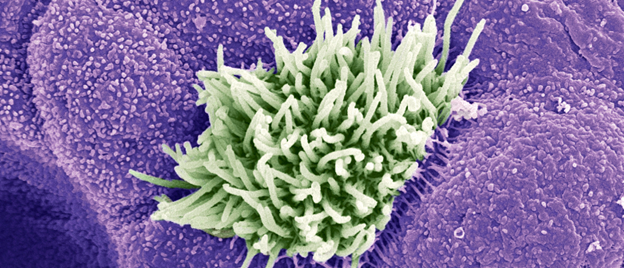Unveiling the Intricate Protein Complex Guiding Signaling to Cilia

Cilia, the tiny hair-like projections found on the surface of most eukaryotic cells, act as the conduits for a myriad of signaling processes that orchestrate cellular activities. However, these intricate organelles are not equipped to craft the signaling proteins themselves. Instead, they rely on an intricate network of transport mechanisms to ferry these essential molecules from other regions of the cell. Facilitating this intricate transport dance are the intraflagellar transport complexes IFT-A and IFT-B. In an astonishing feat, a research team has unveiled the exquisite three-dimensional structure of the IFT-A complex at a resolution of 3–4 Å, providing an unprecedented glimpse into its near-atomic arrangement.
The remarkable revelation yielded more than just structural insights; it unearthed a hitherto unknown zinc-binding site within the IFT-A complex. Zinc finger protein domains, known for their role in pivotal protein-protein interactions, were found to be anchored to this newly discovered site. The significance of this finding resonates in the intricate ballet of molecular interactions that orchestrate cellular processes – zinc fingers are instrumental in facilitating connections with DNA, RNA, poly-ADP-ribose, and an array of other proteins. This discovery, previously unanticipated, fills gaps in our comprehension of the IFT-A complex.
Co-corresponding author Ji Sun, associated with St. Jude Children’s Hospital, expressed their excitement, sharing, "It was pretty exciting to see the zinc fingers because no one had seen or even predicted zinc-binding sites in IFT-A. Our study was able to reveal that with confidence." Sun emphasized that the high-resolution structural information obtained in this study was instrumental in this revelation.
Moreover, the researchers probed the interaction between the IFT-A complex and the Tubby-related protein 3 (TULP3), which was found to play a pivotal role as a "ticket" for boarding the IFT-A transport train. Sun elaborated, "TULP3 is a ticket to get on the train of IFT-A. TULP3 can then recognize different acceptable cargo to be transported on the train. So, when you have molecular cargo that can hold onto this ticket, it can ride the train." This discovery sheds light on how signaling molecules hitch a ride to and from cilia and how disruptions in the IFT-A and TULP3 interface could contribute to various diseases.
The newfound understanding of the IFT-A complex's structure unveils avenues for investigating developmental disorders linked to cilia malfunction. With this high-resolution insight, researchers are now better equipped to explore therapeutic interventions that could potentially mitigate the impact of these disorders, offering hope for innovative treatments in the future.
Source: "Human IFT-A complex structures provide molecular insights into ciliary transport." Jiang M, Palicharla VR, Miller D et al. Cell Research, 33(4), 288–298 (2023).
Image Courtesy of Bio Tech.



